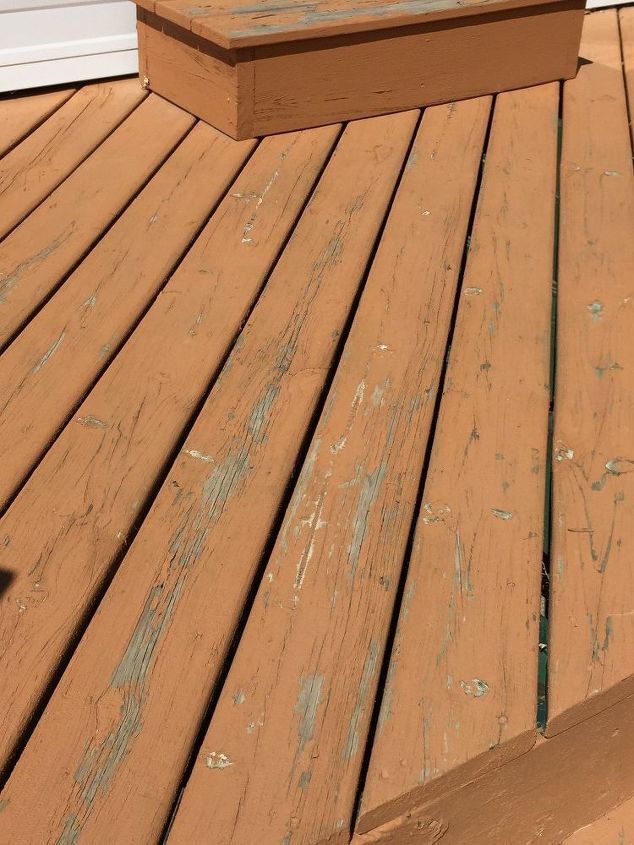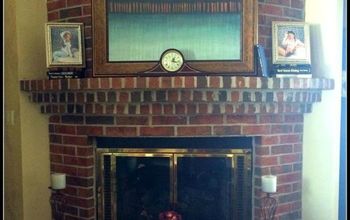How can I make two different sections of a small sidewalk conform?

I recently had a contractor add a small section onto an existing small sidewalk. Unfortunately, both sections are completely different. The new section is relatively smooth, while the older section is rough with more small stone in it. I thought about concrete paint, but that won't solve the texture issue. Is there a way to "skim coat" both of the sections to make them uniform? Any ideas/suggestions will be appreciated.
Related Discussions
Vinyl plank flooring vs pergo (laminate)
I currently have stinky dirty carpeting in my living room and I want to replace it with a durable flooring that can stand up to dogs and kids.
How to remove popcorn ceiling that has been painted?
Does having a paint over a popcorn ceiling change how I'd remove the popcorn ceiling?
How to apply peel and stick wallpaper?
I want to spruce up my walls with peel-and-stick wallpaper. Has anyone used this before and can advise me as to how to apply it properly?
How to stain wood floor?
I've heard staining is a good technique for updating floors. So how do I stain my wood floor?
Porch Railing or Porch Wall? What Do You Think?
We've in the process of building a porch onto the front and side of our house (wraparound). We have the porch floor on, and now we're stuck, trying to decide which wo... See more
Can outdoor carpet (the green stuff) be applied to an exposed deck?
We have a deck that we spent three weekends re-doing with a HGTV recommended deck restoration product that peeled in 9 months. Cleaned and scraped, replaced rotted bo... See more



Patty have you asked the contractor to help with this? You may be better off getting their advice to save money and aggregation.
If it wasn't too long the contractor did the work call him back and have him resurface the concrete with a resurfacing compound. If you want to do it yourself.
https://www.quikrete.com/athome/video-resurfacing-concrete-slabs.asp
https://www.sakrete.com/projects/resurface-old-worn-or-damaged-concrete
https://www.lowes.com/projects/repair-and-maintain/resurface-and-patch-concrete-surfaces/project
one is cement, one with stones is aggragate----why didn't he match it? WEll......Standard concrete paving also tends to be more affordable than exposed aggregatepaving, costing only about $7-9 per square foot. ... While still incredibly durable, exposed aggregate is more prone to damage than standard concrete and therefore needs to be sealed more often. He really should have consulted you about it,you should call him should be under warranty/guarantee still?? There are two basic methods for bonding a portland cement based product to existing concrete; 1) chemically and 2) mechanically.
Let’s discuss the mechanical approach first since it is really used in both approaches. The most effective way to ensure a really good bond is with a scratch coat. This is simply a very wet coat made up by mixing the repair product with water. Mix up a small amount of the repair material to a soupy consistency. You don’t need to measure the water-just turn the stuff into slop. Then, using a gloved hand or a rag, smear the material onto the area to be patched. Just think finger painting from kindergarten. The technique is about the same. Apply pressure to ensure that as much as possible is shoved into the nocks and crannies. You only need a thin coat. It is not necessary for this scratch coat to dry. By the time you get the repair material mixed it will be ready. Then mix up additional repair material to the proper consistency and apply over this thin scratch coat.
The chemical approach involved mixing up a liquid bonding agent that helps bond new concrete products to old. Products like Sakrete Top 'N Bond and Sakrete Flo-Coat already contain polymers that greatly improve the bond of portland cement and should NEVER be used with a liquid bonding agent. I know in America bigger is better but it’s just not so with these products. Other products like Sakrete Sand Mix and Sakrete Fast Set Cement Patcher benefit from the use of a liquid chemical bonding agent such as Sakrete Bonder & Fortifier. When using a liquid bonding agent, paint the bonder onto the existing concrete and allow it to dry until it is tacky. This usually takes only a few minutes. Then apply the repair material. Just as in the process described above, after the bonder has become tacky apply a scratch coat and then apply the repair material. The most effective way to ensure that the bonding agent gets into the existing concrete is to apply it directly using a brush or rag. It can be sprayed if you happen to have a sprayer. Although the directions say that you can use it as part of the mix water, direct application works better.
I would connect then with rock or stepping stones.